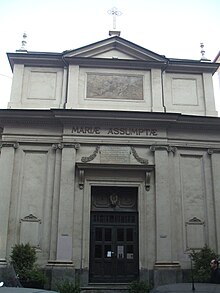
Baroque architecture is a highly decorative and theatrical style which appeared in Italy in the early 17th century and gradually spread across Europe. It was originally introduced by the Catholic Church, particularly by the Jesuits, as a means to combat the Reformation and the Protestant church with a new architecture that inspired surprise and awe. It reached its peak in the High Baroque (1625–1675), when it was used in churches and palaces in Italy, Spain, Portugal, France, Bavaria and Austria. In the Late Baroque period (1675–1750), it reached as far as Russia, the Ottoman Empire and the Spanish and Portuguese colonies in Latin America. In about 1730, an even more elaborately decorative variant called Rococo appeared and flourished in Central Europe.

Turin Cathedral is a Roman Catholic cathedral in Turin, northern Italy. Dedicated to Saint John the Baptist. It is the seat of the Archbishops of Turin.

Filippo Juvarra was an Italian architect, scenographer, engraver and goldsmith. He was active in a late-Baroque architecture style, working primarily in Italy, Spain, and Portugal.
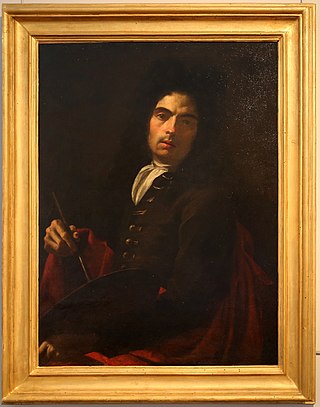
Corrado Giaquinto was an Italian Rococo painter.
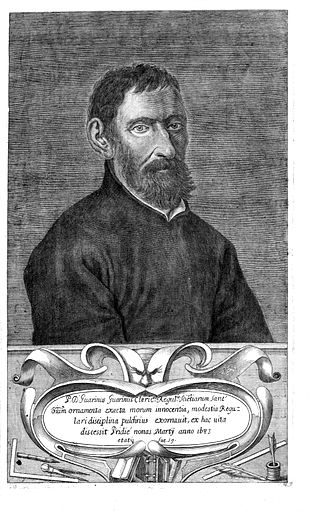
Camillo Guarino Guarini was an Italian architect of the Piedmontese Baroque, active in Turin as well as Sicily, France, and Portugal. He was a Theatine priest, mathematician, and writer. His work represents the ultimate achievement of Italian Baroque structural engineering, creating in stone what could be attempted today in reinforced concrete.
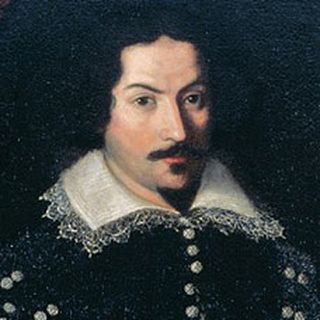
Carlo Maderno (Maderna) was an Italian architect, born in today's Ticino, Switzerland, who is remembered as one of the fathers of Baroque architecture. His façades of Santa Susanna, St. Peter's Basilica and Sant'Andrea della Valle were of key importance in the evolution of the Italian Baroque. He is often referred to as the brother of sculptor Stefano Maderno, but this is not universally agreed upon.
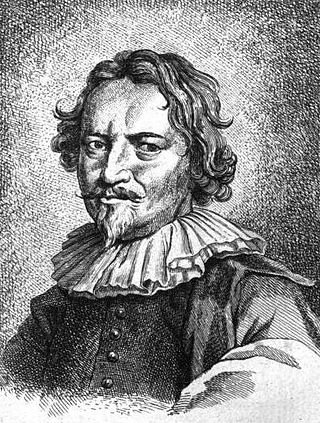
Carlo Fontana (1634/1638–1714) was an Italian architect originating from today's Canton Ticino, who was in part responsible for the classicizing direction taken by Late Baroque Roman architecture.
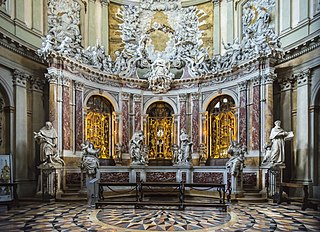
Filippo Parodi was an Italian sculptor of the Baroque period, "Genoa's first and greatest native Baroque sculptor".

Santi Luca e Martina is a church in Rome, Italy, situated between the Roman Forum and the Forum of Caesar and close to the Arch of Septimus Severus.
Giovanni Battista Borra was an Italian architect, engineer and architectural draughtsman.

The Chapel of the Holy Shroud is a Baroque-style Roman Catholic chapel in Turin in northern Italy, constructed to house the Shroud of Turin, a religious relic believed to be the burial shroud of Jesus of Nazareth. It is located adjacent the Turin Cathedral and connected to the Royal Palace of Turin. The chapel was designed by architect-priest and mathematician Guarino Guarini and built at the end of the 17th century (1668–1694), during the reign of Charles Emmanuel II, Duke of Savoy, and is considered one of the masterpieces of Baroque architecture. Heavily damaged in a fire in 1997, it underwent a complex 21 year restoration project, and reopened in 2018. The chapel has an intricate and self-supporting wooden and marble dome.
Amedeo Cognengo di Castellamonte was an Italian architect, civil and military engineer.

Italian Baroque architecture refers to Baroque architecture in Italy.

San Lorenzo, also known as the Royal Church of Saint Lawrence, is a Baroque-style church in Turin, adjacent to the Royal Palace of Turin. The present church was designed and built by Guarino Guarini during 1668–1687.

The Santuario della Madonna Consolata is a Roman Catholic Minor Basilica and Marian sanctuary in central Turin, Piedmont, Italy. Located on the intersection of Via Consolata and Via Carlo Ignazio Giulio, the shrine is dedicated to the Blessed Virgin Mary under the title of Our Lady of Consolation.
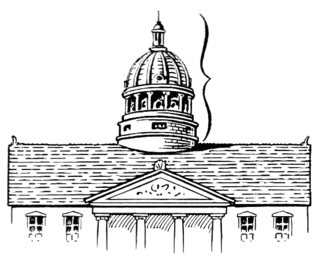
Domes built in the 16th, 17th, and 18th centuries relied primarily on empirical techniques and oral traditions rather than the architectural treatises of the time, but the study of dome structures changed radically due to developments in mathematics and the study of statics. Analytical approaches were developed and the ideal shape for a dome was debated, but these approaches were often considered too theoretical to be used in construction.

The Church of the Immacolata Concezione, also called San Fillippo, is a Roman Catholic church, built adjacent to a former Oratorian seminary and convent, located on Via Vittorio Emenuele II number 61 in the town of Chieri, Province of Turin, region of Piedmont, Italy. The seminary is now a museum called Centro Visite Don Bosco.

The Collegiate Church of Santa Maria della Scala in Chieri is a late-Gothic Roman Catholic collegiate church, and the principal church or duomo, in the town of Chieri, Province of Turin, region of Piedmont, Italy.

The Church of Saint Clare is a Roman Catholic place of worship located in the city of Turin, Italy.
Mario Ludovico Quarini was an Italian architect. He was active in the Piedmont, and completed unfinished projects of Bernardo Antonio Vittone. He began his career in the exuberant baroque of Vittone, but moved into more neoclassical styles. He was born in Chieri.


